Do you want to know exactly how much your German stamps are worth? Are you looking for a complete compendium of German stamp values? If so, then this is the list for you!
For the past 50 years, Germany has been one of the top leaders in printing and minting stamps. They have produced a wide variety of stamps that have been collected by people of all ages.
With so many stamps that have been produced for such a long time, there are bound to be a few valuable ones too. These 10 most valuable German stamps are collectible items that can be worth thousands of dollars to the right collector.
The German postal service is a formidable institution that provides a cheap and reliable service for sending letters and packages all over the world, but it’s not just about postage stamps. Over the years, Germany has released a number of commemorative issues of special interest to coin and stamp collectors.
The wide array of German stamps issued over time means that there’s plenty of room for price appreciation and good investment opportunities.
Table of Contents
10 Rarest and Most Valuable German Stamp Value Chart
No. |
German Stamp |
Year |
Price |
1 |
Baden 9 Kreuzer Error Stamp |
1851 |
$1,394,211.28 |
2 |
German Offices in China Unissued 25pf Tientsin |
1900 |
$30,800 |
3 |
Rare Audrey Hepburn Stamps |
2001 |
$456,479.40 |
4 |
“Kerstfest” Error Stamp |
2016 |
$21,180 |
5 |
German Offices in China, unissued 40pf Tientsin overprint |
1900 |
$35,750 |
6 |
Oldenburg 1/3 Gr |
1896 |
$339,324.80 |
7 |
5m Kaiser Wilhelm II Invert Error Single |
1905 |
$60,790 |
8 |
German Occupation of Lithuania 80k Ultramarine Stamp |
1941 |
$1,980 |
9 |
One Kreuzer Black |
1849 |
$600-$1600 |
10 |
2-mark Germania Stamp |
1920 |
$65,500 |
1. Baden 9 Kreuzer Error Stamp
Year: 1851
Price: $1,394,211.28
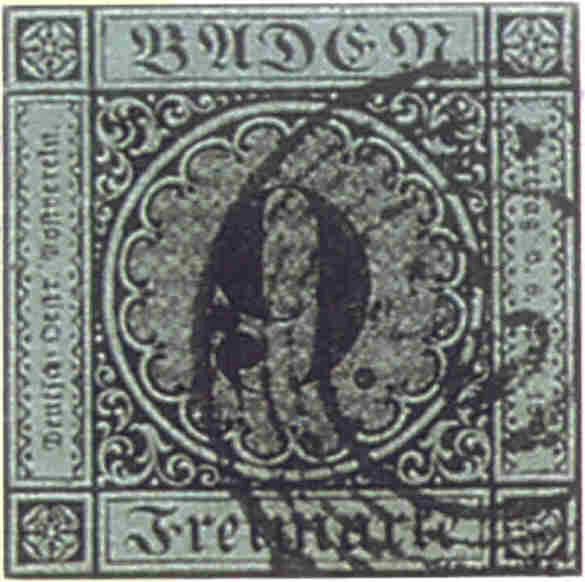
The Baden 9 Kreuzer Error is a historic postage stamp issue from the state of Baden in Germany. The first issue was issued on 1 May 1851 and it included the 9 Kreuzer Green stamp, which was printed in green instead of pink as originally planned. In 1919, Carl Julius Trübsbach from Chemnitz acquired an unused copy with nearly full original gum. Some people think the color was lightened due to heat damage during World War II. In 1991, it was auctioned for US$ 603,750. In 1997, it was auctioned again and sold for US$ 1,314,500.
2. German Offices in China Unissued 25pf Tientsin
Year: 1900
Price: $30,800
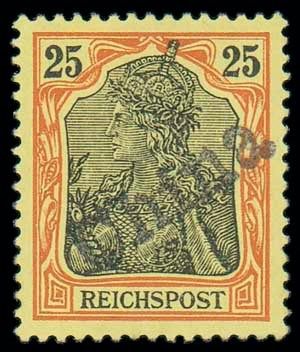
Germany’s Post Offices Abroad was a network of post offices in foreign countries set up by Germany to provide mail service where the local services were thought to be unsafe. In the earliest period of their existence, German post offices were established in cities with a business interest for Germans. The stamps used at these offices can only be identified by their cancellations. Postage stamps from German post offices abroad hold appeal for many collectors, some of which are quite valuable. On November 13th, an Unissued 25pf Tientsin German Stamp sold for $30,800.
3. Rare Audrey Hepburn Stamps
Year: 2001
Price: $456,479.40
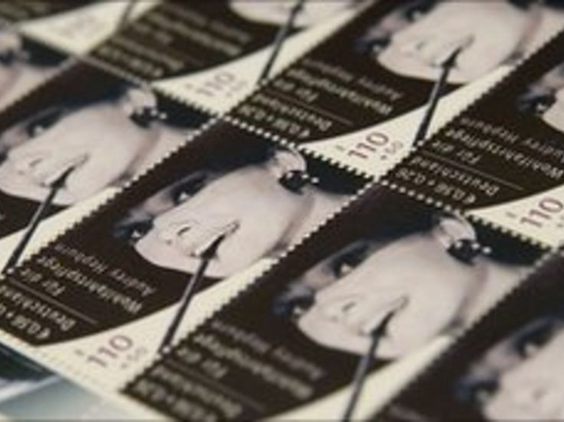
A sheet of ten stamps showing film star Audrey Hepburn smoking sold at auction in Berlin for $456,479.40 (£380,000). The German Post Office issued 14 million stamps portraying the actress as Holly Golightly in the film Breakfast at Tiffany’s. They show Hepburn with a long, black cigarette holder hanging from her lips. But, Sean Ferrer(her son) refused to grant the copyright to the image, saying that it had been altered and that all but a few sheets of paper had been destroyed. In accepting the auction proceeds, he donated two-thirds to the Audrey Hepburn Children’s Fund and one-third to Unicef.”
4. “Kerstfest” Error Stamp
Year: 2016
Price: $21,180
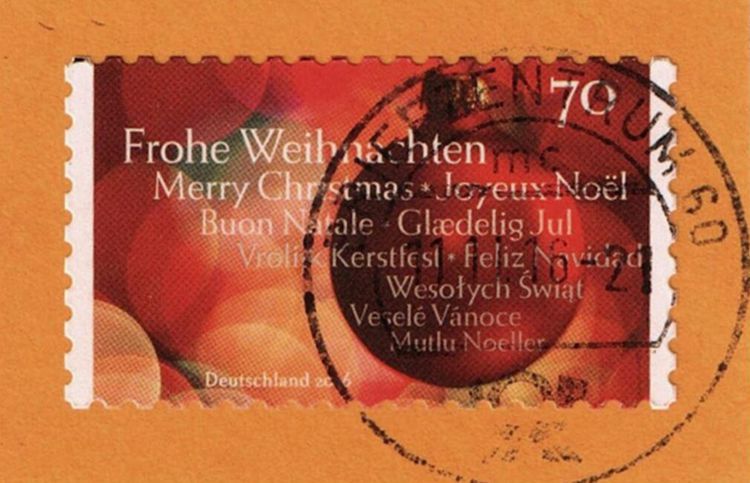
The German 2016 “Kerstfeest” stamp error was a philatelic rarity. This item was issued and then caught in the production process by mistake: the Dutch word”Vrolijk kerstfeest” was spelled wrong – it should have been Kerstfest. The original word means “Merry Christmas.” This stamp is classified as a rare and valuable German stamp error and its value is pretty high depending on the condition of the stamp.
Due to a printing error, a set of Dutch stamps was not distributed. The Royal Dutch Post Office recalled the stamps and reprinted them using the correct spelling. A sheet of 10 “Kerferst” error stamps was sold by the Felzmann auction house in June 2017 for an astounding $33,000!
A sheet of ten rare stamps with printing errors sold for 100,000 Euros (112,394 dollars) at a stamp show. In November 2019, Felzmann auctioned another sheet of ten unused error stamps for $21,890.
5. German Offices in China unissued 40pf Tientsin overprint
Year: 1900
Price: $35,750
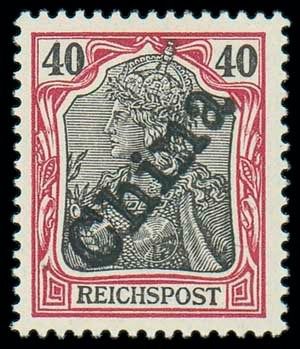
From China to Morocco, the Ottoman Empire to Zanzibar, Germany established a network of post offices in foreign countries during the late nineteenth century. These post offices served several purposes, most notably providing mail services where the local service provided was deemed unsafe or unreliable. This system came to a close after World War I.
A cancellation mark on a stamp can show where it was used. These marks are called “Vorläufer” (forerunner) stamps. Overprints on stamps identify the place of issuance even when not for postal use. On November 13th, a German Stamp from that era sold in an auction for $35,750.
6. Oldenburg 1/3 Gr
Year: 1896
Price: $339,324.80
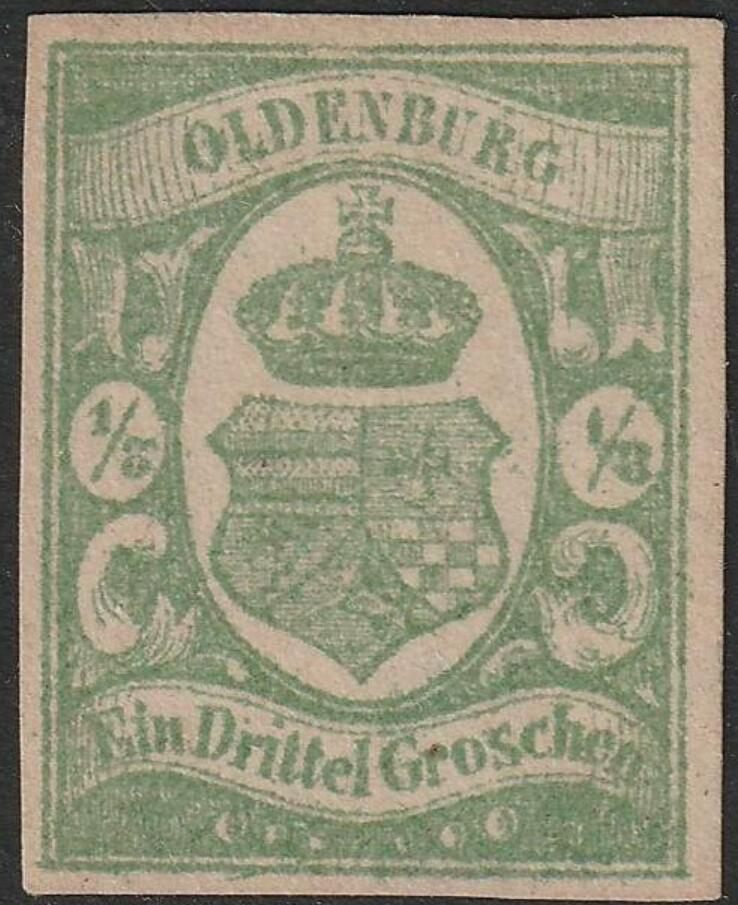
A German stamp called Oldenburg 1/3 Gr. black on a green paper issued in 1859 is a valuable imperforate lithographed stamp that was printed on colored paper. Experts think that just one block of four stamps and a few pairs were preserved in unused condition. The stamps in the set feature a crown over the Arms of Oldenburg at the center, with denominations and the name of the duchy inscribed on ribbons at the top and bottom.
A stamp block of twelve antique stamps previously owned by Arthur Hind and Maurice Burrus appeared at the Heinrich Koehler auction of the Erivan Collection in June 2019. Considered by many to be one of the greatest rarities in the philatelic world, this impressive lot sold for $339,324.80.
7. 5m Kaiser Wilhelm II Invert Error Single
Year: 1905
Price: $60,790
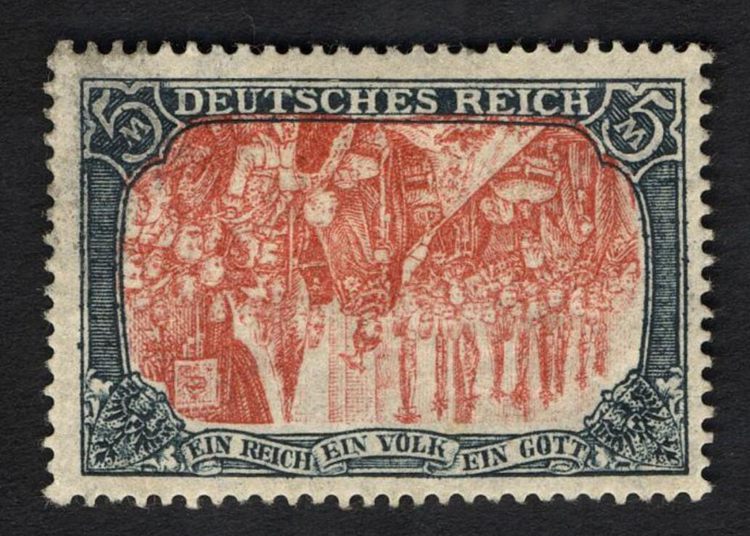
On this 1905 German stamp, Kaiser Wilhelm II looks into the camera and poses as he gives a speech in 1896 for the German Empire’s 25th anniversary. The stamps of this issue were printed in sheets of 20. Collectors have determined that the inverted image here is a rarity, suggesting that it was printed in only one sheet.
A very fine copy of Kaiser Wilhelm, described as one of the most valuable stamps in German philately by Württembergisches Auktionshaus, was sold at a sale in October 2015 for about $40,200. Another copy of this valuable collectible featuring fresh colors and two dated bridge cancels—the first to appear on the market in years—went on sale at Felzmann’s auction in March 2016 and sold for $60,790
8. German Occupation of Lithuania 80k Ultramarine Stamp
Year: 1941
Price: $1,980
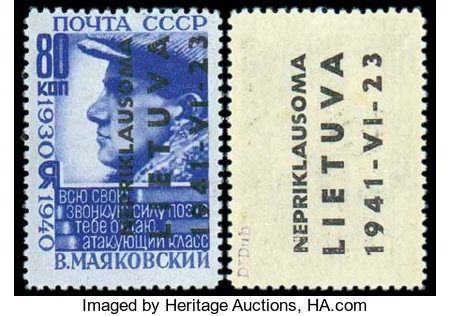
The Nazi occupation of Lithuania lasted from the German invasion of the Soviet Union on June 22, 1941 until January 28, 1945, when they retreated at the end of the Battle of Memel. When the Germans first arrived, they were seen as liberators from the repressive Soviet regime that had occupied Lithuania prior to their arrival.
Lithuania had declared independence from the Russian Empire in 1990. The Nazis occupied Lithuania in 1941, stamping over the pre-1941 postage issues with a swastika and “Deutsche Besetzung” (German Occupation). This is one of those stamps, overprinted on front and back. It’s also one of only 50 of these issued. O.g., never hinged. F.-V.F. and rare. The stamp was recently sold on the 19th of January, 2004 for $1,980.
9. One Kreuzer Black
Year: 1849
Price: $600-$1600
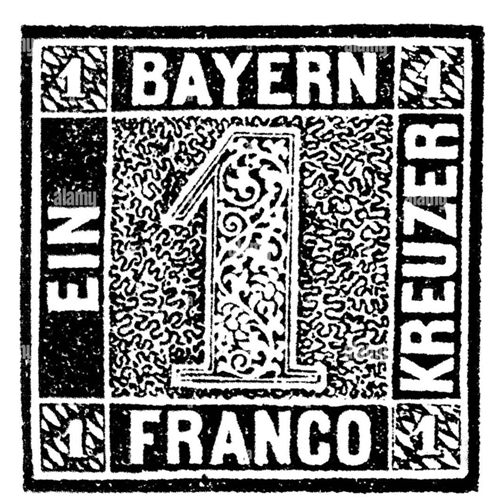
The One kreuzer black (German: Schwarzer Einser; also called just Einser) was the first postage stamp issued in the Kingdom of Bavaria, and the first anywhere in the territories making up modern Germany. One black Kreuzer stamp was issued on 1 November 1849. Eight hundred thirty-two thousand five hundred copies were printed on handmade paper in the printing shop of the University of Munich.
The stamps were taken off sale in October 1851 but remained valid for postage until 31 August 1864. The stamp is black and has a large numeral at the center. Later engraving was transferred from wood to plaster, which led to distortions in the size of the stamp print. Due to the damage to the engraving press and engraving itself, variations appeared, including color dots and damaged angles. The estimated value of the One Kreuzer Black is $600-$1600 according to wikipedia. However, it can be sold for way higher in an auction.
10. 2-mark Germania Stamp
Year: 1920
Price: $65,500
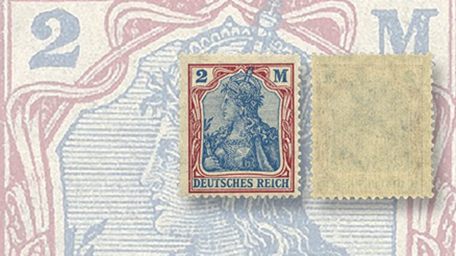
A two-mark Germania stamp with a quatrefoil watermark is a rare variety of this unique collectors’ item that is quite expensive nowadays. Stamp collectors believe that only a few of the stamps were printed on paper with a watermark of repeating quatrefoils, little diamond-shaped clouds. In November 2015, a German stamp collector found an unused copy of the scarce stamp and auctioned it at Aix-Phila in France.
The Aix-Philata sale opened with a bid of €20,000, and with a 20 percent buyer’s commission, the stamp sold for €60,000. And all it took was a few drops of watermark fluid.
Deutsches Reich Stamps: History
Have you ever wondered, What is the Deutsches Reich stamps? How did it all begin? Well, here’s a brief history that will give you a glimpse on German Stamps.
From the years 1871-1995, Germany had a total number of 5 main postal services. The main postal provider in Germany was the Reichspost, which was in operation from 1871 through 1945. After the Reichspost was dissolved in 1945, the Deutsche Post under Allied control became the main postal service provider, however, the period lasted until 1949.
Then came the Deutsche Post in East Germany (1949–1990) and the Deutsche Bundespost in West Germany (1949–1995)—along with a mail system for West Berlin (called the Deutsche Bundespost Berlin). They were later combined into one system called the Deutsche Post AG.
The Metzger Post
There were other secondary postal services related to Germany. One of which was Metzger Post. The Metzger Post is credited as perhaps the first international post of the Middle Ages. Butchers organized courier mail services with horses, using a horn to announce the mail’s arrival and thus creating a common emblem for postal services. In the twelfth century, the Metzger Post was established. It continued to provide public mail delivery until 1637, when the Thurn und Taxis’s monopoly began.
Thurn und Taxis
In 1497, Franz von Taxis, working for Emperor Maximilian I of the Holy Roman Empire, established a postal service to replace the existing ad-hoc courier system. They started using horse relay systems that cut the transit time for mail in half and made its arrival more predictable. Thereafter, the house of Thurn und Taxis used imperial yellow and black livery to maintain their postal privilege for many centuries.
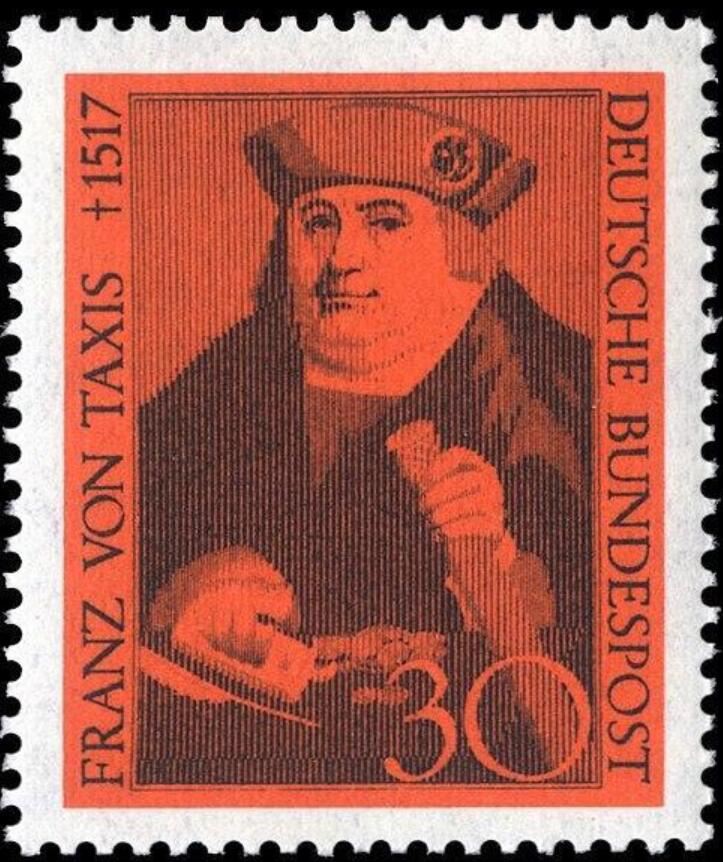
When Napoleon granted the Rhine Confederation the right to conduct postal services, the Thurn und Taxis family lost its monopoly. The Thurn and Taxis agency continued to operate even when Prussia created the North German Confederacy, but they had to sell their privileges in 1867.
Reichspost
Deutsche Reichspost came into being on May 4, 1871, issuing stamps of the North German Confederation until it was able to issue its own first stamp-issue January 1st of the following year. The Germania stamp was the most common postage stamp of the Reichspost. In German philately, the longest-running series of postage stamps was the so-called Germania issues, which were issued from 1900 through 1922. The only change during that time period was the inscription from Reichspost to Deutsches Reich.
After the Nazis came to power, one of their first initiatives was to maintain a monopoly on stamp production by nationalizing the Reichspost. Nazi propaganda also influenced German stamp design and policy.
The Hitler head stamp was so-named for the German leader and printed for regular use, many semipostal stamps were issued. The Nazis changed the inscription on stamps in the last year before the end of the war from “Deutsches Reich” (“German Empire”) to “Grossdeutsches Reich” (“Greater German Empire”).
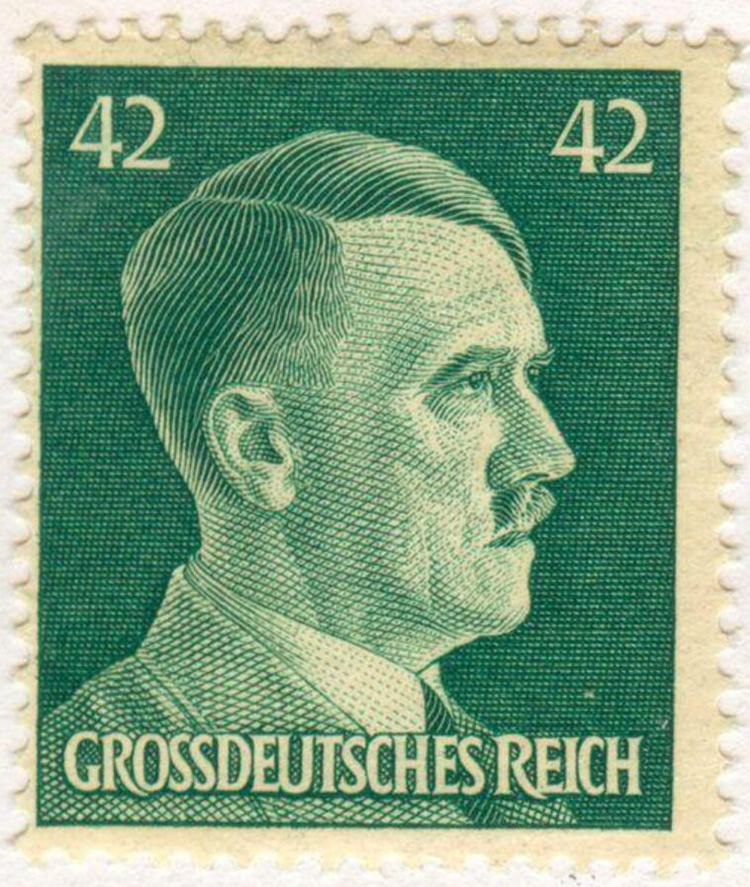
Deutsche Bundespost Berlin
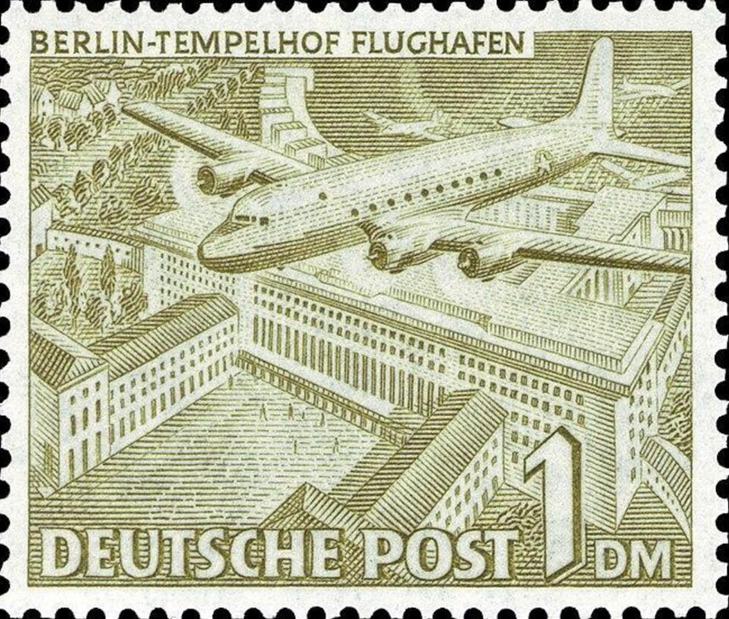
The Berlin district under the jurisdiction of the three western powers started to issue its own stamps on September 3, 1948. The German Democratic Republic issued its own stamps for 42 years, creating a total of over 800 different stamp designs, until the German reunification in 1990.
Deutsche Post of the GDR
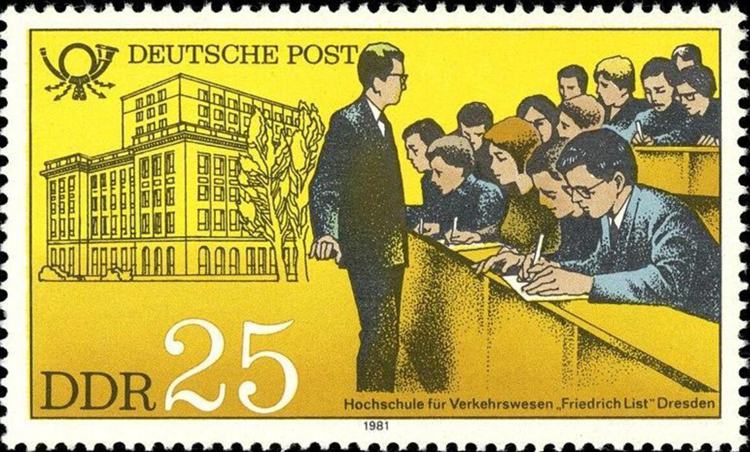
In 1949, the Deutsche Post of the German Democratic Republic (GDR; more popularly known as East Germany) was established as a governmental agency to handle mail services. The first stamp was released on October 9, 1949. The production of these colorful stamps was prolific—about 3,000 different stamps were produced during the life of the DP—but only a few were semi postals.
Deutsche Bundespost
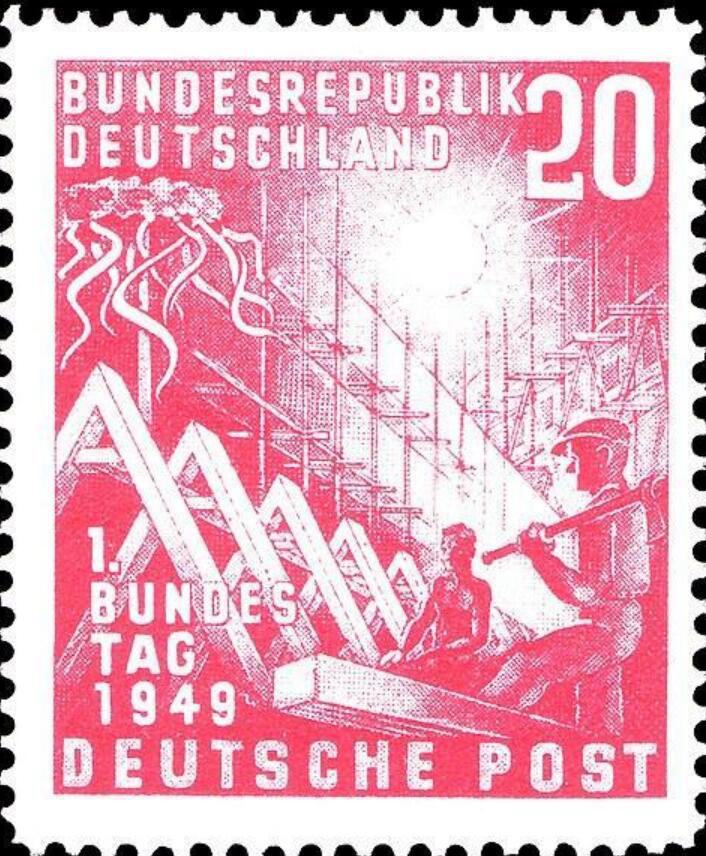
After the Federal Republic of Germany was formed in 1949, the German federal post office (Deutsche Bundespost) became the governmental agency with a government-granted monopoly for mail delivery. In 1950, the name (Deutsche Bundespost) was adopted, it was formerly known as “Deutsche Post.” According to one source, approximately 1,400 different stamps had been issued.
Postal Authority |
Regular stamps issued |
Semipostals issued |
Combined |
Reichspost |
556 |
293 |
849 |
Deutsche Post (GDR) |
2,805 |
191 |
2,996 |
Deutsche Bundespost Berlin |
592 |
285 |
877 |
Deutsche Bundespost |
955 |
395 |
1,350 |
How To Identify German Stamps & Value Guide (1900-1902)
Since the invention of the postage stamp in 1840, more than 500,000 different stamps have been produced around the world. Proper identification can sometimes be challenging when dealing with so many different stamps. Collectors generally want to know which country issued a stamp, the date of issue, and whether the stamp is part of a series.
Germany’s longest running definitive stamp series is the Germania, issued from 1900 to 1922. The issues span two eras: the German Empire and the Weimar Republic, encompassing World War I and its aftermath. There are many types of Germania with many minor variations and many surcharges and overprints.
Most German Stamps are quite affordable, some retailing for a few cents and others a few dollars. Since it’s been in use for so long, the stamp series has some rare, collectable stamps that could be worth thousands.
Types
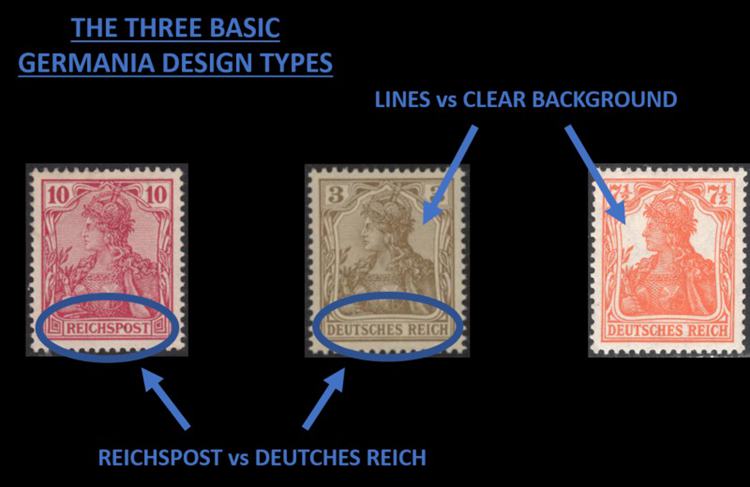
As seen above, these are the three major types of German Stamps. In the original design of stamps issued in 1900, they were inscribed with Reichspost. Beginning in 1902, the inscription was changed to Deutsches Reich (German Empire). The last major change was the removal of shading lines in the stamp backgrounds (as seen in the image above) from 1916 to 1919.
Watermarks
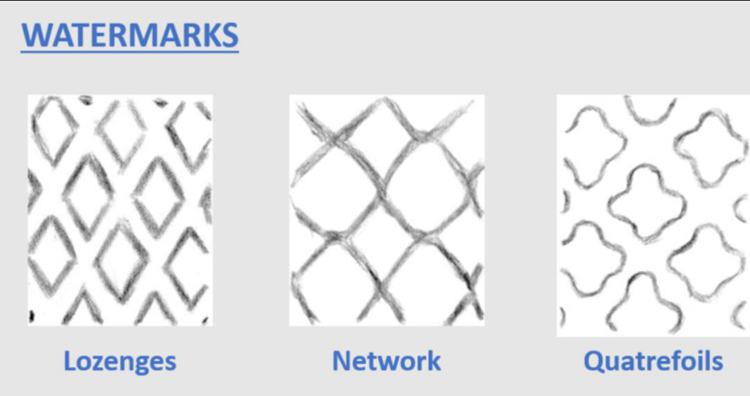
In the early days, German stamps had watermarks (three types) ; these watermarks can be spotted on the stamp. The majority of stamps have no watermark or the lozenge watermark, which you can easily identify by the diamond-shaped outline it creates on the surface of the stamp.
Late in the Germania stamp series’ run, about three stamps were printed on paper with a network patterned watermark.
Two stamps from the 1920-1922 issue were printed on paper with a wavy quatrefoil watermark. The wavy quatrefoil was intended for use with revenue stamps.
1900
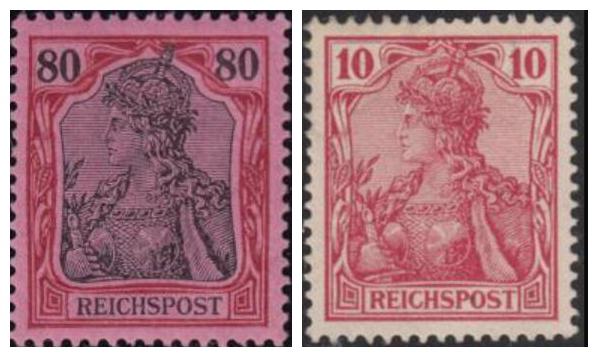
On the left (Germania Inscribed REICHSPOST, Type 13, 1900), On the right (Germania – Bicolor Colored Paper Inscribed REICHSPOST Type 13 1900)
1900 Issues: Typographed. Unwatermarked. Perforated 14
pfennig |
Description |
Condition(mint) |
Condition(used) |
2 |
blue-grey – type 13 |
$0.80 |
$0.55 |
3 |
brown – type 13 |
$0.80 |
$0.95 |
5 |
green – type 13 |
$1.15 |
$0.55 |
10 |
carmine – type 13 |
$2.00 |
$0.70 |
20 |
ultramarine – type 13 |
$8.25 |
$0.55 |
25 |
orange & black – yellow paper – type 13 |
$13.75 |
$5.15 |
30 |
orange & black – pale orange paper – type 13 |
$20.00 |
$0.80 |
40 |
lake & black – type 13 |
$25.75 |
$1.25 |
50 |
purple & black – salmon paper – type 13 |
$25.75 |
$1.10 |
60 |
lake & black – rose paper – type 13 |
$40.00 |
$2.55 |
1902
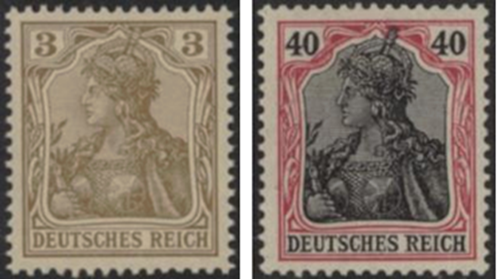
On the left (Germania Inscribed DEUTSCHES REICH Type 18 1902) On the right (Germania – Bicolor Inscribed DEUTSCHES REICH Type 18 1902)
1902 Issues: Typographed. Unwatermarked. Perforated 14
pfennig |
Description |
Condition (mint) |
Condition(used) |
2 |
grey – type 18 |
$1.60 |
$0.55 |
3 |
brown – type 18 |
$0.80 |
$0.95 |
3 |
brown – type 18 – DFUTSCHES spelling error |
$10.50 |
$42.50 |
5 |
green – type 18 |
$2.25 |
$1.00 |
10 |
carmine – type 18 |
$8.25 |
$0.70 |
20 |
ultramarine – type 18 |
$33.00 |
$1.00 |
25 |
orange & black – yellow paper – type 18 |
$52.00 |
$2.00 |
30 |
orange & black – pale orange paper – type 18 |
$57.00 |
$0.60 |
40 |
lake & black – type 18 |
$75.00 |
$1.10 |
50 |
purple & black – buff – type 18 |
$75.00 |
$1.10 |
80 |
lake & black – rose paper – type 18 |
$160.00 |
$2.85 |
What German Stamps are Worth money? The German stamp series is vast, if you want a complete guide that will show you all the Germania series and their worth, you can check out German Series Overview (1872-1920) it shows an up-to-date catalog of the series through-out the years plus proper identification.
Final Words
Hopefully, you found this article informative, but we also hope that you’ll continue learning about stamps in general. And if you’re looking to add to your collection of German stamps, be sure to check out the items on our “Top 10 most valuable” list above, each of which will greatly increase in value over time. Finding some of them might be impossible, however, there’s a possibility of finding at least one of the stamps.
Unfortunately, there’s no easy way to track the price of collectible stamps of all varieties. The guide above should help, but it’s just a starting point. You’ll have to do some research in order to know how much your most valuable German stamp is worth. Thanks for stopping by!





![Where To Sell Antique Furniture In 2022 [Ultimate Guide]](https://www.jacquelinestallone.com/wp-content/uploads/2022/09/Etsy-Your-Place-To-Buy-And-Sell-All-Things-Handmade-600x450.jpg)


